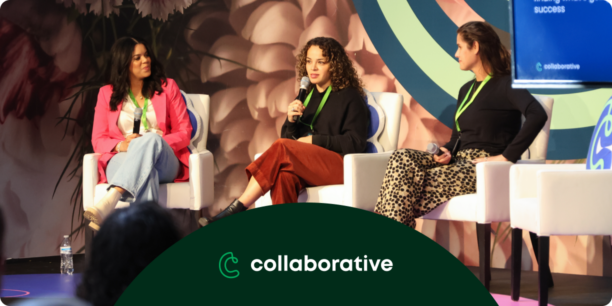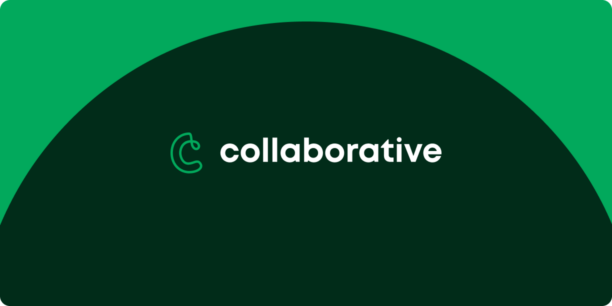Nonprofit Banking: 9 Considerations to Help You Navigate the Process

If you’re considering a nonprofit bank account or evaluating your nonprofit banking operations, you’re exactly where you need to be.
We’ve narrowed down expert tips to help you navigate the nonprofit banking process and stay organized along the way. Below, you’ll find the most important factors in selecting a bank account as a 501(c)(3) nonprofit.
The Importance of Banking for Nonprofits
A nonprofit bank account is the next step to becoming a fully operational nonprofit organization. Without one, managing various program, administrative, and fundraising costs can be less than ideal. Your nonprofit bank account is also a place to evaluate where donations originate and how to allocate them to different programs.
How can nonprofits organize finances with a bank account?
Before we explore the various nonprofit bank accounts and options available to your organization, let’s first touch on the benefits of having a bank account.
With your team busy doing amazing things each day, banking with different banks and personal accounts requires a lot of time and energy that may take you away from achieving your goals.
Your nonprofit bank account makes it easier to:
- Monitor cash flow
- Manage multiple lines of credit
- Participate in online banking
- Accept more forms of payments, making nonprofit credit card processing a breeze
- Manage employee payroll
- Pull financial reports
- File annual Internal Revenue Service (IRS) tax returns
Does it cost money for nonprofit organizations to open a bank account?
The cost to open a bank account depends on the financial institution you choose. We’ll dive into some important factors to make that choice below and a few cost-effective options to consider.
For now, know that you may run into monthly maintenance fees, opening deposits, and transaction fees. However, the financial institution you choose can often waive these, with a minimum balance available in your account.
Which type of bank account should a nonprofit open?
Business banking accounts provide nonprofits with more benefits, such as broad access, streamlined cash management, and more straightforward annual summaries. Here are a few business bank accounts your nonprofit may explore:
- Nonprofit checking account: Grab a business debit card, accept ACH payments easily, use bill pay for facilities and tech services, and access cash faster through in-person ATM withdrawals
- Nonprofit business savings account: Get an ATM card and continue to accept ACH payments, even though this is more a deposit account for future planning, offering benefits to save over time
*With a savings account, you can build interest over time. Check out this cool interest rate calculator to evaluate this option.
- Credit card: Open a credit account with your financial institution to borrow money for your nonprofit—and since you can’t overdraw your account, you’ll want to be sure you can replenish your account balance
- Money market accounts: Access a debit card and check-writing advantages with a savings account, but know those transactions have limits and interest rates can be higher than other account types
Rules to be aware of before opening a bank account
Here are a few things to keep in mind before you start the process:
- Your 501(c)(4) or 501(c)(3) status from the IRS
- Your nonprofit’s incorporation paperwork, bylaws, tax ID number, and letter of exemption from the IRS
- Your Employer Identification Number (EIN)
- Your starting deposit
- Your Form 990, despite nonprofits being tax exempt
4 steps to set up bank accounts for nonprofits
- Gather your documentation: Make sure all the above documents are ready and available, either through PDFs if you’re planning to open a savings or checking account online or through printed assets that you can hand to your representative
- Decide who should have direct access: Identify a treasurer and select other officers who can sign checks on behalf of the organization, with their Social Security and driver’s license numbers available
- Choose a bank: Select the best bank and account type that works for your nonprofit (we’ll talk about this next)
- Make your initial deposit: Know where your required deposit comes from and have it ready to go
Evaluating a Nonprofit Bank
The best way to choose a nonprofit bank is to look at several options and discuss the benefits and downsides of each with your officers. Consider asking each financial institution questions like:
- What are your ethical standards or guidelines?
- Do you have experience working with nonprofits?
- Do you have unique resources for nonprofits?
- Do you waive fees for nonprofits?
- How will you provide documentation for our annual Form 990?
- Do you provide a mobile banking option or mobile apps?
More factors to help you choose the best nonprofit bank
- Member FDIC deposit insurance: Find out if the bank is FDIC insured because it’ll determine if you have the benefit of deposit insurance
- Bank type: Partner with financial institutions specifically beneficial to nonprofits operating in a local community:
- Community banks derive funds from and lend to the community and have no affiliation with multibank holding companies
- Credit unions perform the same financial services as a bank but are instead nonprofit financial institutions owned by those who use its financial products and services
- Community Development Financial Institutions are lenders that pride themselves on providing fair, responsible financing options, especially in underserved communities
- Rate of return: Know what the annual percentage yield (APY) is for your bank account
- Proven track record: Ask about how the financial institution supported nonprofits during the 2020-2022 economic downturn to learn if the bank has a positive history of supporting 501(c)(3) bank accounts. Finding a financial institution that can help foster economic resilience in nonprofitswill be paramount to having a successful banking experience.
The Best Nonprofit Bank Accounts
Now that you know what to look for and what to be cautious about, let’s get you started with the highly rated banks for nonprofits and what makes them stand apart. Start your exploration here, and use these top contenders as a baseline for future financial institution conversations.
1. LendingClub
LendingClub, a financial services company based in San Francisco, California, was the first peer-to-peer lender to register with the Securities and Exchange Commission to expand its offerings.
Everything we do is centered around empowering you to meet your personal financial goals by enabling access to a broad range of financial products, services, and educational resources, all designed to help you pay less when borrowing and earn more when saving.
Vision statement: We’re leading the governance of a new industry, developing ethical, responsible ways to bring greater value and better opportunities to customers.
Features:
- Low monthly fee of $10 waived with an average monthly balance of $500 or more
- Unlimited fee-free transactions and ATM cash deposits worldwide
- Unlimited 1% cash back on credit transactions
- 1.5% APY on balances up to $100,000 and .10% APY on all balances that follow
2. U.S. Bank
U.S. Bank, the fifth-largest banking institution in America, is a bank-holding company out of Minnesota and incorporated in Delaware. It’s the parent company of the U.S. Bank National Association.
Since the Lincoln administration signed our national bank charter No. 24 in 1863, we’ve drawn on our financial strength to serve customers. This has been especially evident in times of need, such as during the COVID-19 pandemic. Our response by the end of 2020 included a $20 million premium pay program for our employees, relief assistance and 108,000 Small Business Administration Paycheck Protection Program (PPP) loans for our customers, and $30 million in expedited charitable contributions for our communities.
Vision statement: We will focus on adding value for our customers and making the necessary investments to ensure long-term success—and we will do it simply, efficiently, and effectively.
Features:
- Over 2,000 brick-and-mortar branches across 26 states
- Free nonprofit business account
- Free transactions and cash deposits
- Nonprofit business credit card
- Minimum opening deposit of $100
- 0.005% APY
- Calculators and rate charts to get started
3. Bluevine
Bluevine is a financial technology company with high-yield business checking and lending for small businesses, making it an excellent option for tech-savvy nonprofits. It focuses on services and bank accounts that support growing operations and prides itself on offering more attention and customer service than a large lender may.
Bluevine was founded in 2013 as a financial technology company that builds better banking solutions for growing businesses, and provides the attention and service they deserve. By combining industry-leading technology and security with dependable customer support, we give business owners the funding and services that they need to succeed.
Vision statement: We build intentionally with the prosperity of small businesses as our top priority—from our banking to financial operations products, small business owners can rely on Bluevine to grow their businesses to new heights.
Features:
- Business lines of credit available
- All deposits are FDIC insured up to $250,000
- No monthly service fee
- 2% APY on balances up to and including $100,000
- Unlimited fee-free transactions
- No fees at over 37,000 MoneyPass ATMs
Approach Nonprofit Banking With Confidence
There you have it. Now you know the value nonprofit banking offers as you strategize for future growth. You know the different bank accounts that benefit a nonprofit organization, the rules to be aware of before you start, and the four simple steps to follow when you’re ready to make the decision and open a business account.
Additionally, you have a list of the best nonprofit banking options available to kick-start your search for a solid partner that meets your short and long-term goals.
Speaking of partners, Classy always has you covered for anything you need to establish a successful foundation and raise more for your organization’s mission. From showing volunteer appreciation to choosing the best type of nonprofit to get started with, we’re here to help.

Learn More About Classy



